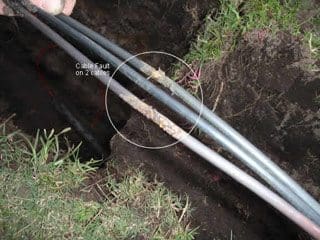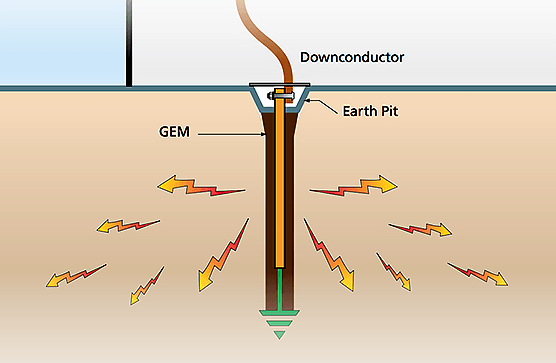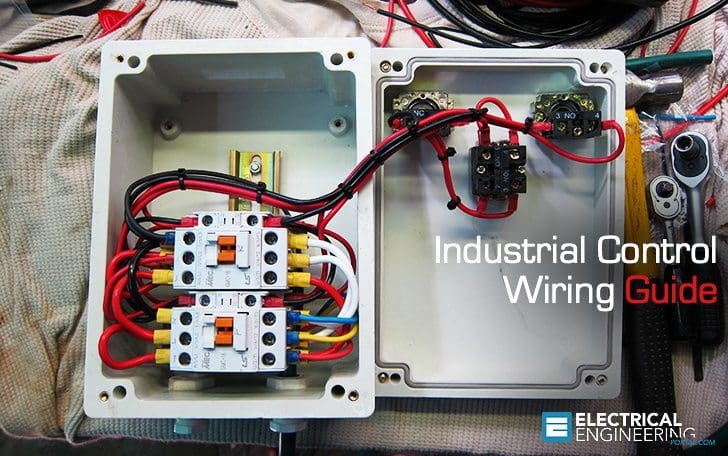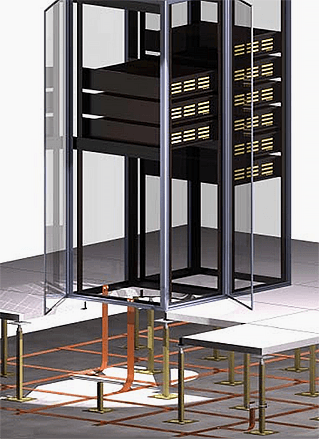
A common approach to test cable and determine insulation integrity is to use a Hi-pot test. In a hi-pot test, a DC voltage is applied for 5 to 15 min. IEEE-400 specifies that the hi-pot voltage for a 15-kV class cable is 56 kV for an acceptance test and 46 kV for a maintenance test (ANSI/IEEE Std. 400-1980). Other industry standard tests are given in (AEIC CS5-94, 1994; AEIC CS6-96, 1996; ICEA S-66-524, 1988). High-pot testing is a brute-force test; imminent failures are detected, but the amount of deterioration due to aging is not quantified (go/no-go test).
The DC test is controversial – some evidence has shown that hi-pot testing may damage XLPE cable (Mercier and Ticker, 1998). EPRI work has shown that dc testing accelerates treeing (EPRI TR-101245, 1993; EPRI TR-101245-V2, 1995).
For Hi-pot testing of 15-kV, 100% insulation (175-mil, 4.445-mm) XLPE cable, EPRI recommended:
Another option for testing cable integrity: ac testing does not
degrade solid dielectric insulation (or at least degrades it more
slowly). The use of very low frequency AC testing (at about 0.1 Hz) may
cause less damage to aged cable than DC testing (Eager et al., 1997)
(but utilities have reported that it is not totally benign, and ac
testing has not gained widespread usage).- Do not do testing at 40 kV (228 V/mil) on cables that are aged (especially those that failed once in service and then are spliced). Above 300 V/mil, deterioration was predominant.
- New cable can be tested at the factory at 70 kV. No effect on cable life was observed for testing of new cable.
- New cable can be tested at 55 kV in the field prior to energization if aged cable has not been spliced in.
- Testing at lower dc voltages (such as 200 V/mil) will not pick out bad sections of cable.
The low frequency has the advantage that the equipment is much smaller than 60-Hz AC testing equipment.
Fault Location
Utilities use a variety of tools and techniques to locate underground faults. Several are described in the next few paragraphs [see also EPRI TR-105502 (1995)].Divide and conquer
On a radial tap where the fuse has blown, crews narrow down the faulted section by opening the cable at locations. Crews start by opening the cable near the center, then they replace the fuse. If the fuse blows, the fault is upstream; if it doesn’t blow, the fault is downstream.Crews then open the cable near the center of the remaining portion and continue bisecting the circuit at appropriate sectionalizing points (usually padmounted transformers). Of course, each time the cable faults, more dam-age is done at the fault location, and the rest of the system has the stress of carrying the fault currents. Using current-limiting fuses reduces the fault-current stress but increases the cost.
Fault indicators
Faulted circuit indicators (FCIs) are small devices clamped around a cable that measure current and signal the passage of fault current. Normally, these are applied at padmounted transformers. Faulted circuit indicators do not pinpoint the fault; they identify the fault to a cable section.
Utilities’ main justification for faulted circuit indicators is reducing the length of customer interruptions. Faulted circuit indicators can significantly decrease the fault-finding stage relative to the divide-and-conquer method. Models that make an audible noise or have an external indicator decrease the time needed to open cabinets. Utilities use most fault indicators on URD loops. With one fault indicator per transformer (see Figure 1), a crew can identify the failed section and immediately reconfigure the loop to restore power to all customers. The crew can then proceed to pinpoint the fault and repair it (or even delay the repair for a more convenient time).
For larger residential subdivisions or for circuits through commercial areas, location is more complicated. In addition to trans-formers, fault indicators should be placed at each sectionalizing or junction box. On three-phase circuits, either a three-phase fault indicator or three single-phase indicators are available; single-phase indicators identify the faulted phase (a significant advantage). Other useful locations for fault indicators are on either end of cable sections of overhead circuits, which are common at river crossings or under major highways. These sections are not fused, but fault indicators will show patrolling crews whether the cable section has failed.
Fault indicators may be reset in a variety of ways. On manual reset units, crews must reset the devices once they trip. These units are less likely to reliably indicate faults. Self-resetting devices are more likely to be accurate as they automatically reset based on current, voltage, or time. Current-reset is most common; after tripping, if the unit senses current above a threshold, it resets [standard values are 3, 1.5, and 0.1 A (NRECA RER Project 90-8, 1993)]. With current reset, the minimum circuit load at that point must be above the threshold, or the unit will never reset. On URD loops, when applying current-reset indicators, consider that the open point might change.
Click here to read the full article







